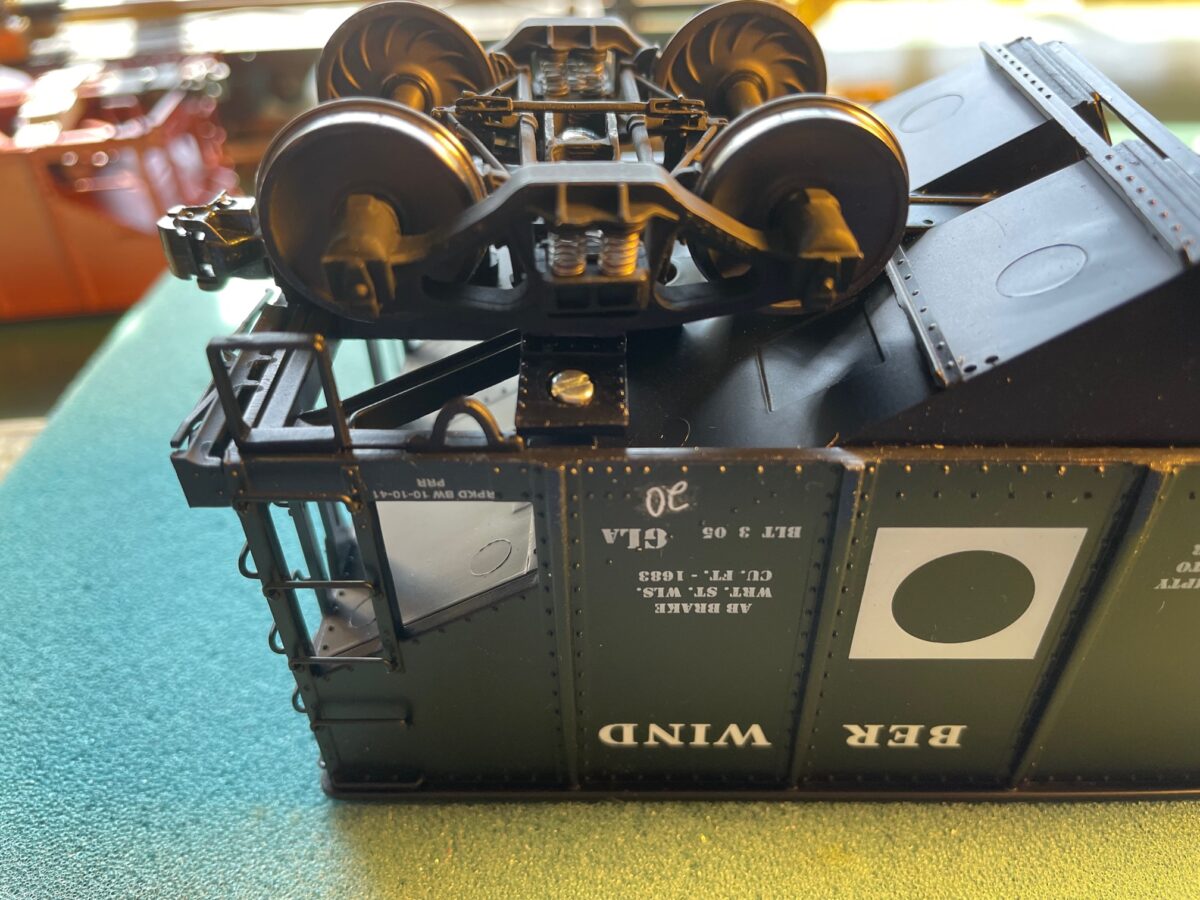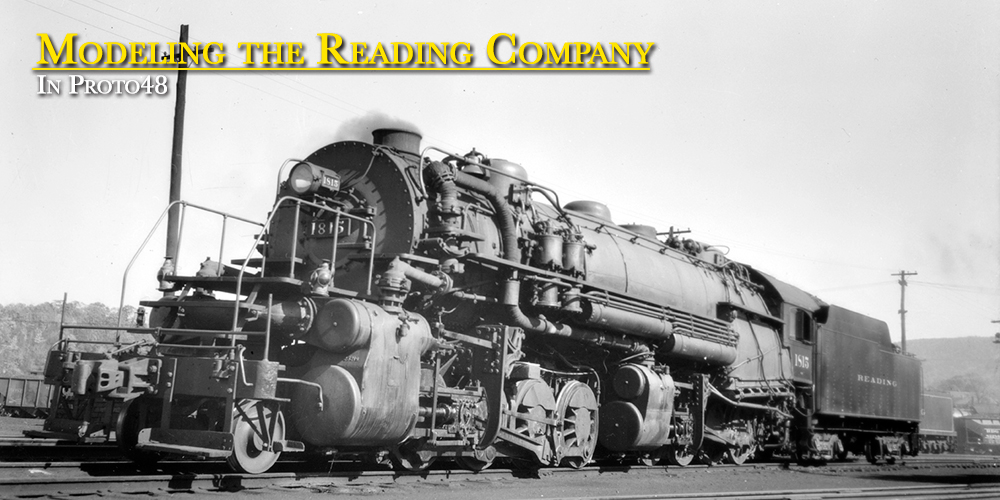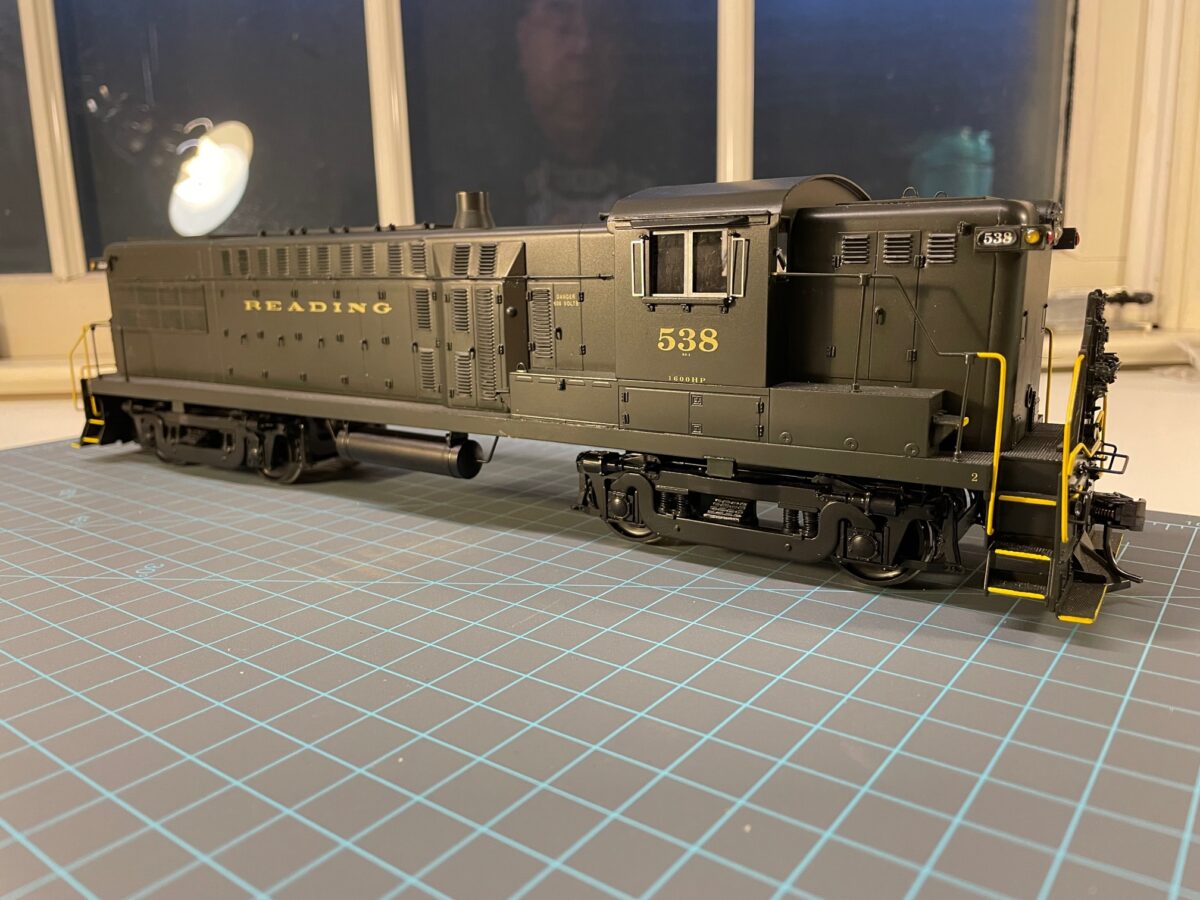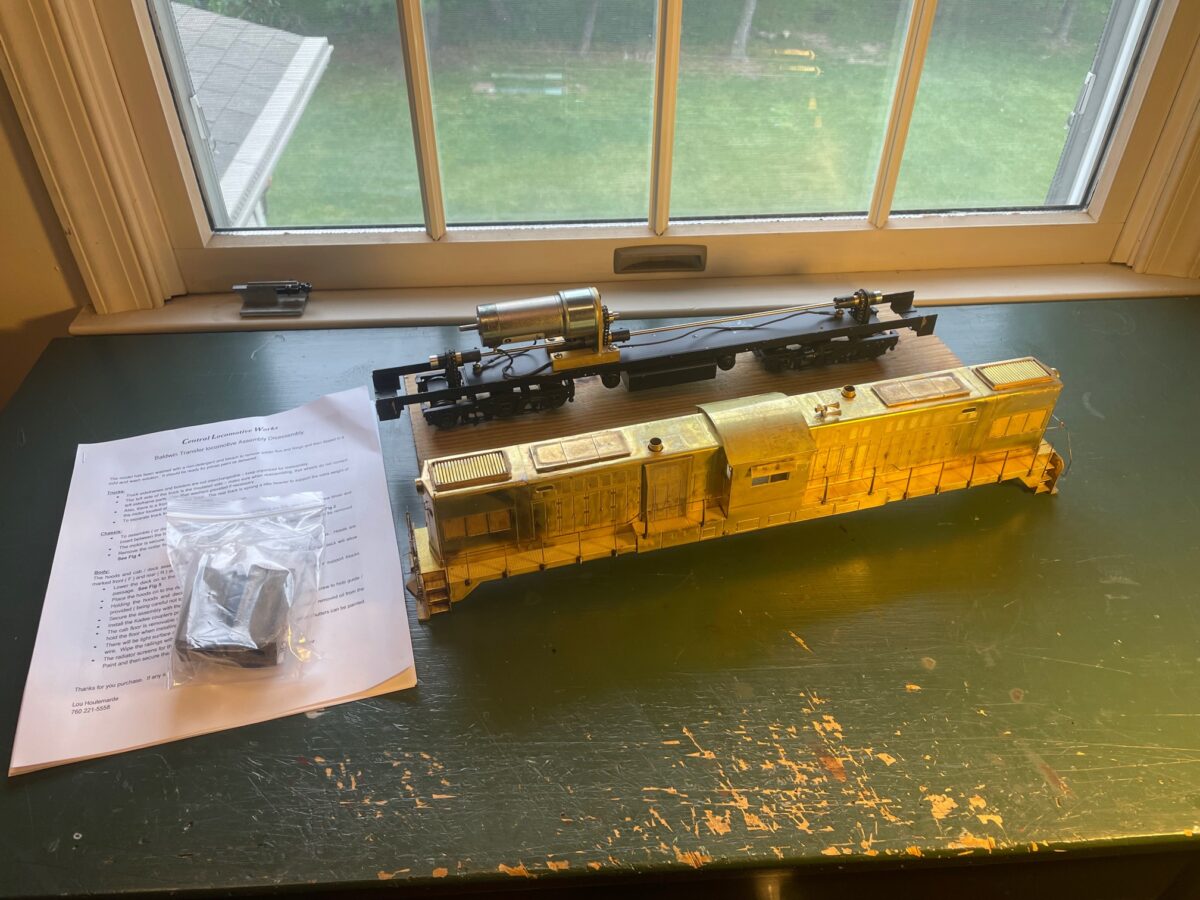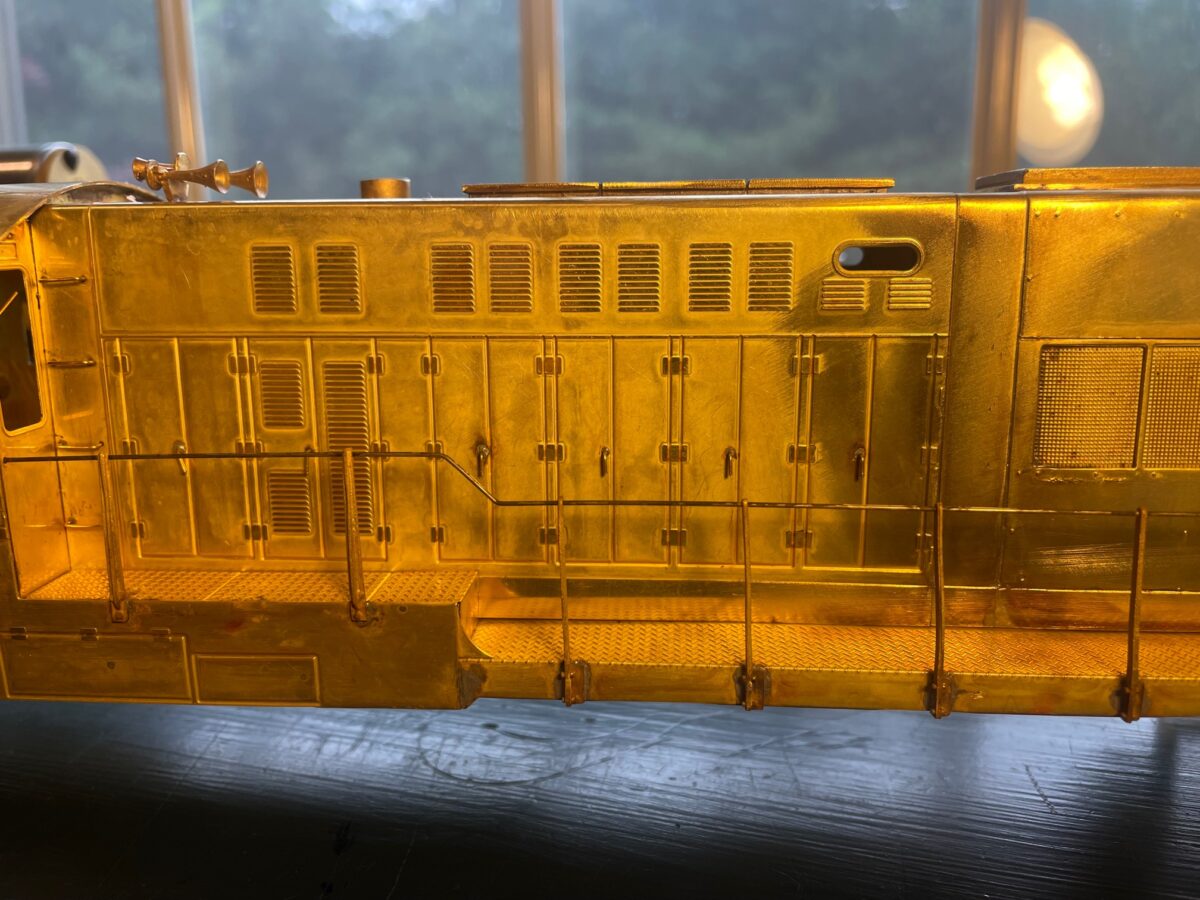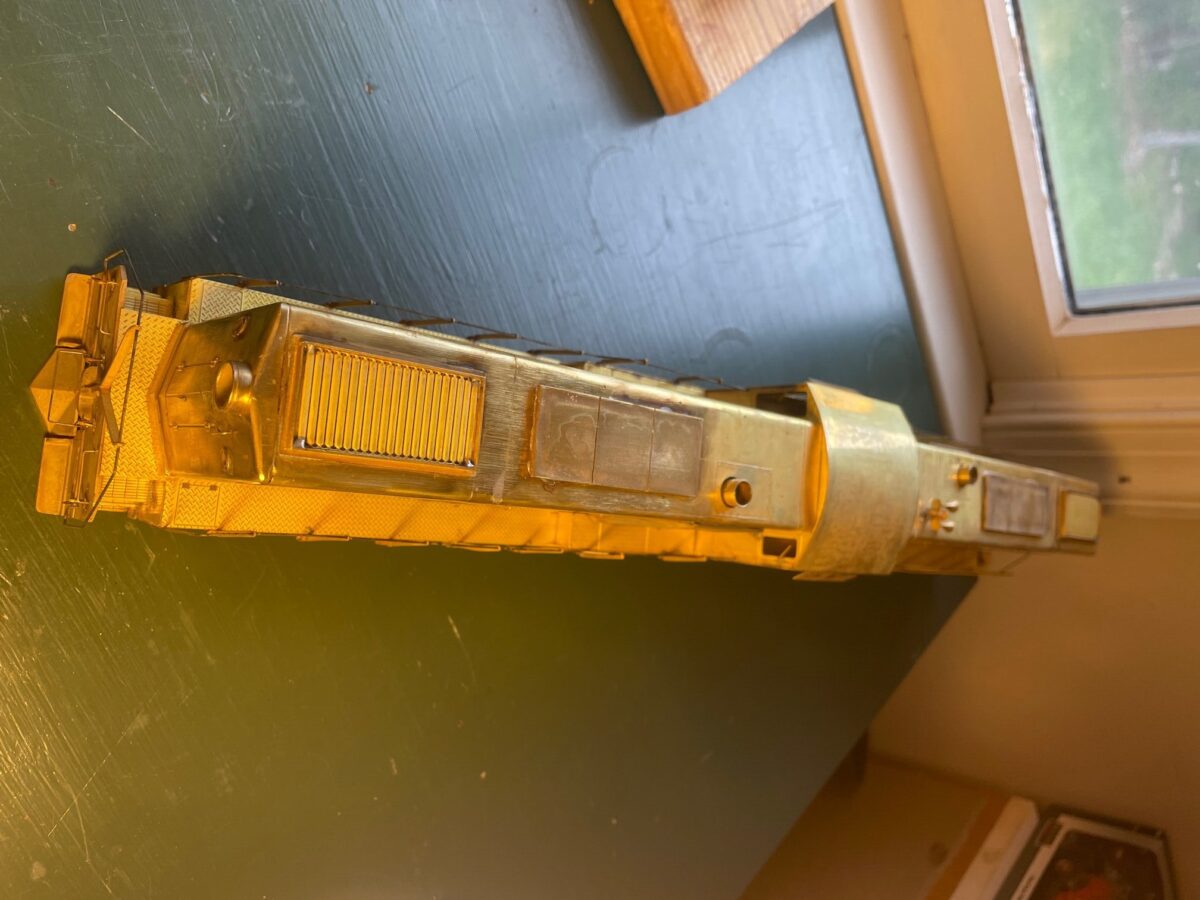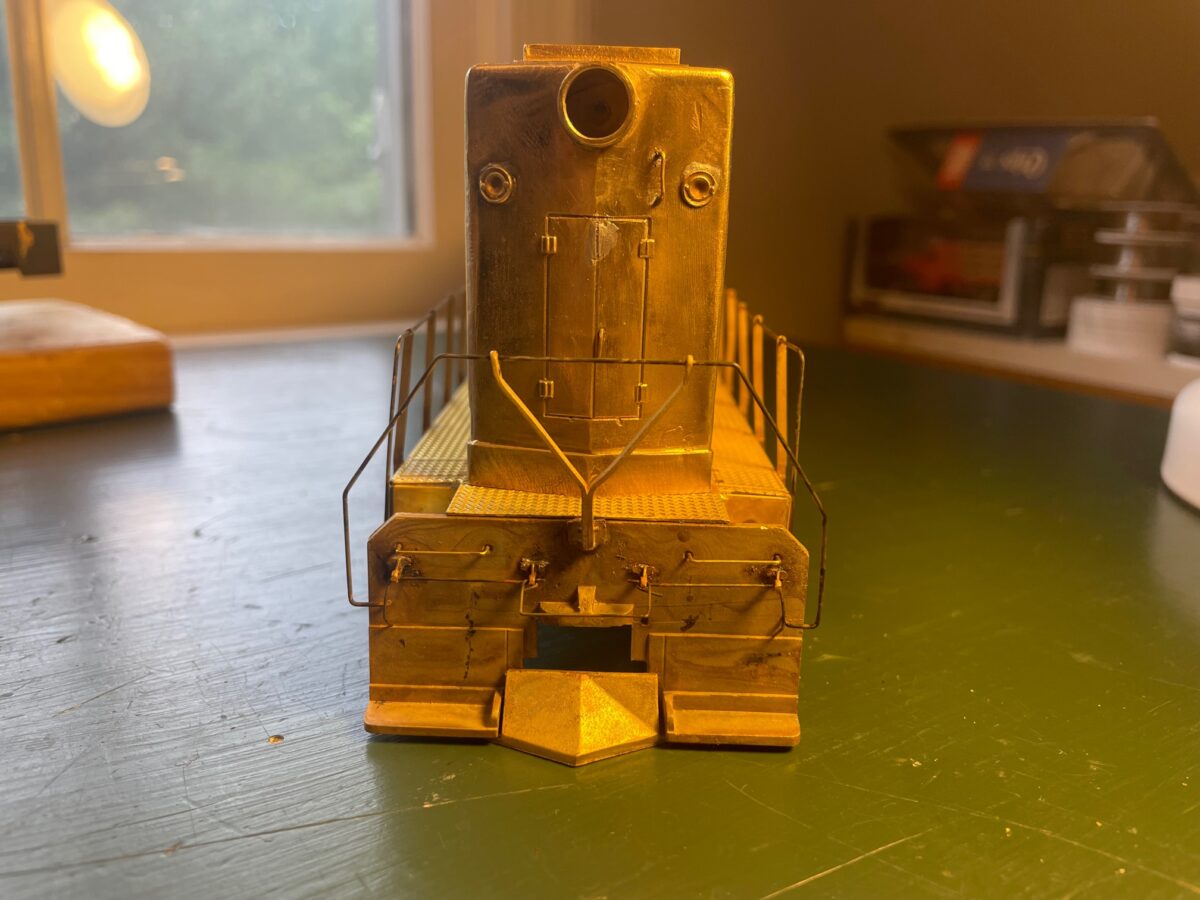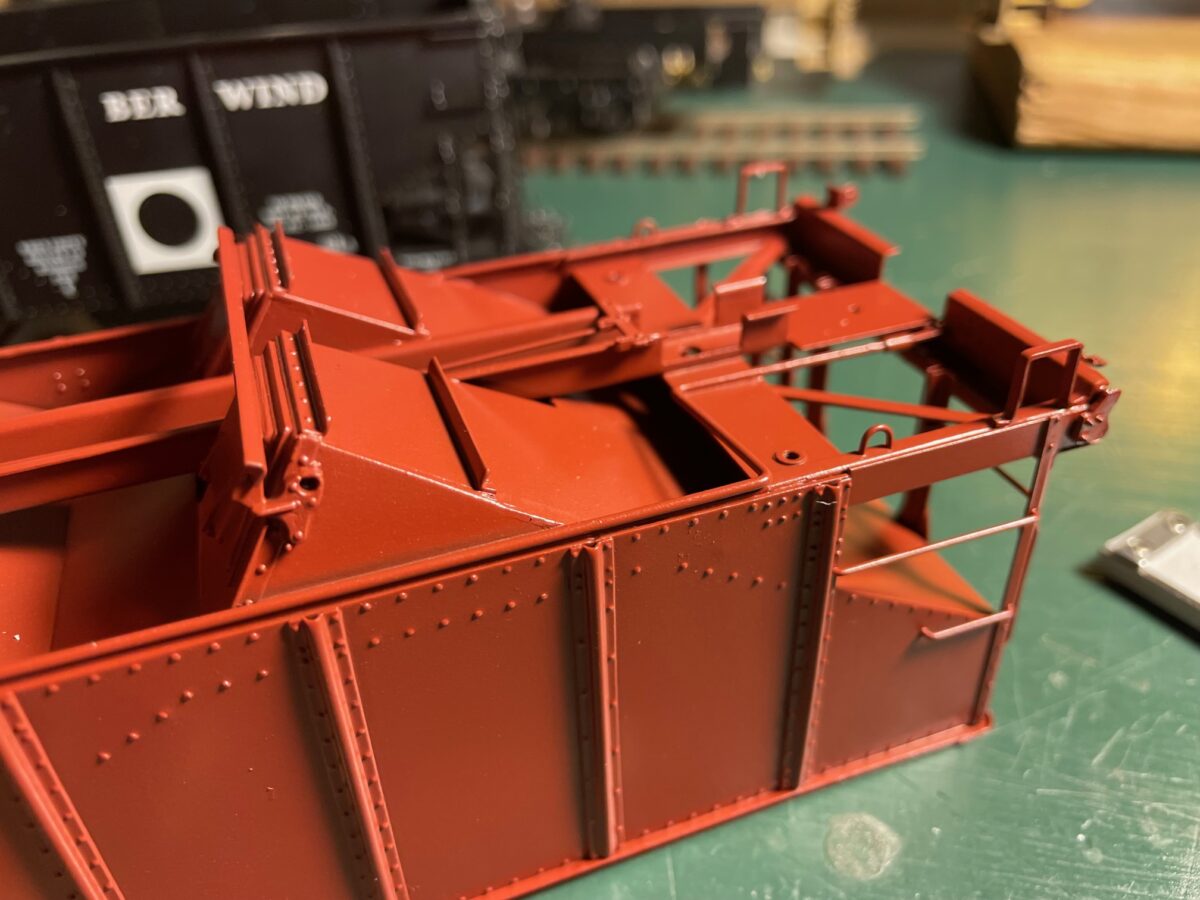
The title is simple but can mean different things to different people. My own thoughts on standards has evolved over time.
Standards can be as simple as making sure your models meet NMRA standards, so they operate properly. Or it can be how many details are you going to add to each model before you can call a model done.
To me, the NMRA standards are the bare minimum. If it doesn’t meet the Proto48 standards for wheels it will not operate properly. That is the starting point, for some it is the end point. Those modelers don’t care about all the different details. How many times have you heard them say they only break off anyway, why bother? Maybe that is what’s nice about the hobby, every modeler can make that call for themselves. There is no right or wrong answer, just what’s right for you and your modeling.
This post is more about what I am standardizing on now. It’s not a certain level of detail. Today the Standard I’m using is more basic than that.
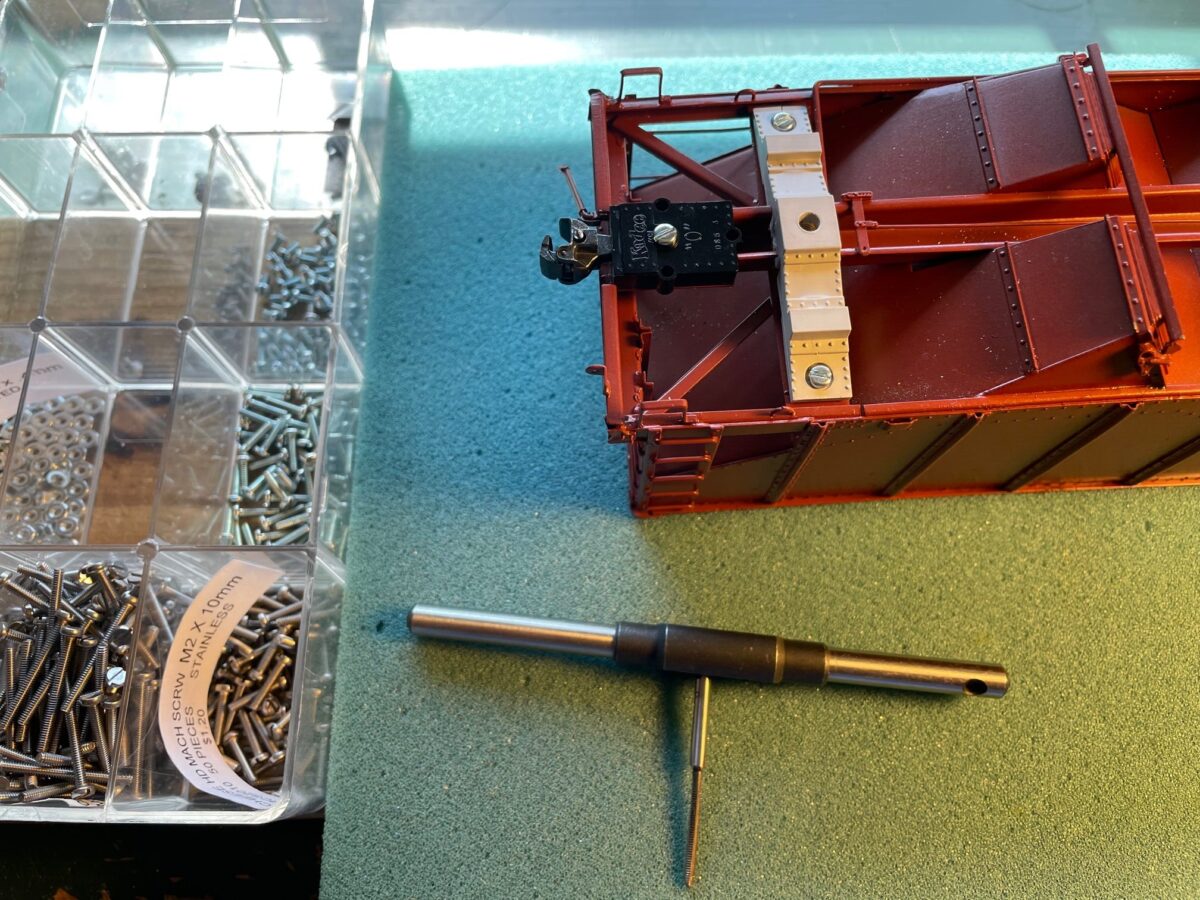
This morning, I was attaching the plastic bolsters to a 40 year old Precision Scale model. The hardware package supplied when the model was imported has disappeared in the years since the model was imported.
So today, my modeling standards are something as simple as tapping the holes for a 2 mm screw which are my standard for mounting the bolsters to cars. Same thing for mounting of the couplers to the car body. The tiny hole for the coupler on the model (top photo) is tapped for another 2 mm screw.
Below shows how the same standard was used to mount the PSC Bolster to a Lionel Berwind GLa. Allowing a pair of Proto48 trucks to be mounted completing that part of the conversion. Now I just need to touch up the screw head with some paint and it all disappears.
